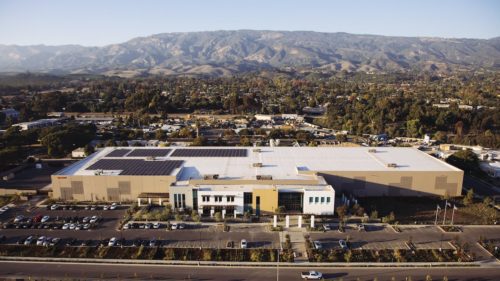
Overcoming the barriers to microgrid proliferation
The Direct Relief Solar Microgrid provides an example of how current policies limit the size of Solar Microgrids and their resilience benefits for communities. New technology and policy innovations are ready change that.
With increasing natural disasters and Public Safety Power Shutoffs (PSPS), microgrids are proliferating like never before. During power outages, microgrids can “island” from the grid and operate independently, keeping a residence, municipal building, or commercial facility online.
Barriers to microgrid expansion
But microgrids are prevented from maximizing their economic, environmental, and resilience benefits for our communities by rules governing net energy metering (NEM), which artificially limit the size of microgrids; a lack of effective procurement methods, such as cost-effective Feed-in-Tariffs (FITs) with Market Responsive Pricing and Dispatchability Adders; and concerns that the power grid can’t handle more distributed solar.
These barriers limit the potential for Community Microgrids, which serve entire communities by ensuring indefinite renewables-driven backup power for critical community facilities such as fire stations, hospitals, and emergency shelters.
A prime example of these issues, and how they can be overcome, is the Solar Microgrid serving Direct Relief, one of the largest disaster recovery and supply nonprofits in the world. NEM and other constraints limit Direct Relief’s headquarters to about 25% of the solar that its built environments can support.
+ Read the full Direct Relief case study
Direct Relief’s need for resilience
Direct Relief runs the largest distribution hub for humanitarian medical aid in the US. The organization’s Santa Barbara headquarters hosts a state-of-the-art warehouse and logistics facility that is engineered to withstand earthquakes, fires, and tsunamis – allowing its life-saving logistical operations to continue in the event of a local disaster.
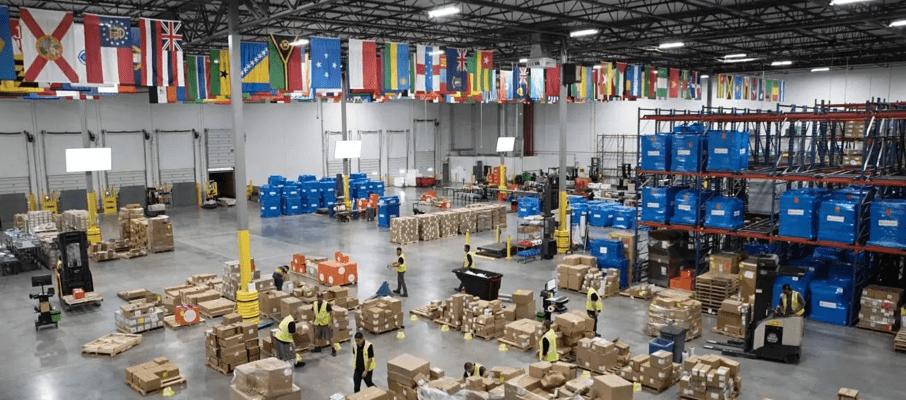
But the facility’s modern engineering is not enough. Direct Relief’s global logistics operations, including a large stockpile of temperature-sensitive, life-saving medical supplies, depend on electricity. Its location in the Goleta Load Pocket (GLP) – a disaster-prone stretch of California coastline served by just one transmission path routed through 40 miles of mountainous, high-fire-threat terrain – leaves Direct Relief vulnerable to power outages.

The solution: A Solar Microgrid
To avoid losing essential electricity during a grid outage, Direct Relief engaged a third-party microgrid provider to install, own, and operate a Solar Microgrid at its headquarters through a power purchase agreement (PPA), at no upfront cost to them.
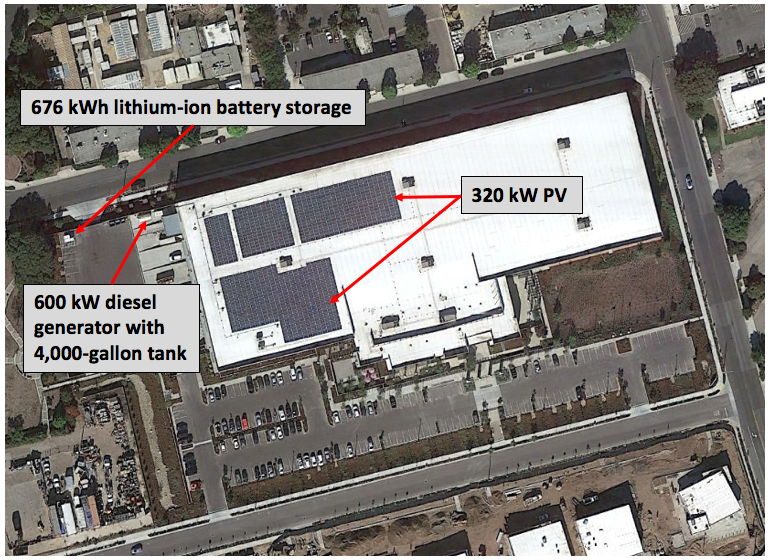
The microgrid’s solar and energy storage were designed to indefinitely support Direct Relief’s critical loads during a prolonged grid outage. An onsite diesel generator provides backup to the backup.
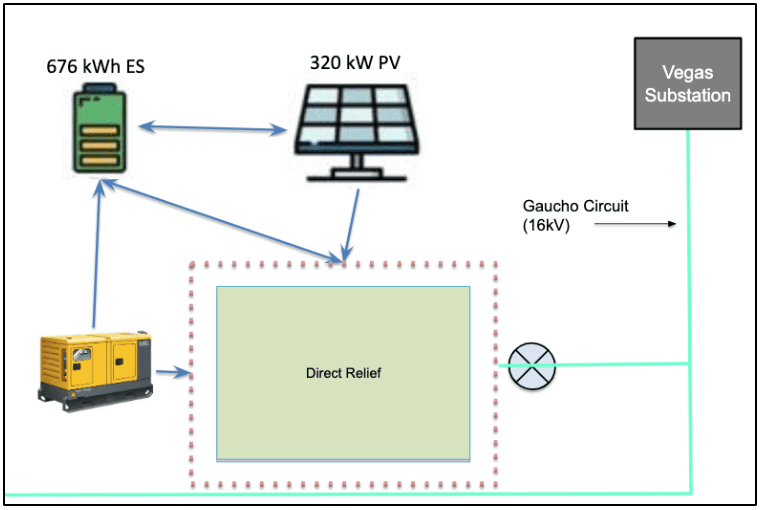
Standard and emergency Solar Microgrid operations
The Solar Microgrid began operating in late 2018 and has been performing well – even generating more energy than expected. However, Direct Relief used more energy than anticipated and had to import some energy from the grid.
During standard operations the grid, solar, and battery work in concert, time-shifting loads and net-metering energy for maximum value. During a grid outage, the solar+storage will enable operations to continue – with the sun powering the facility during the day and the battery powering it through the night until the sun rises the next morning to recharge it.
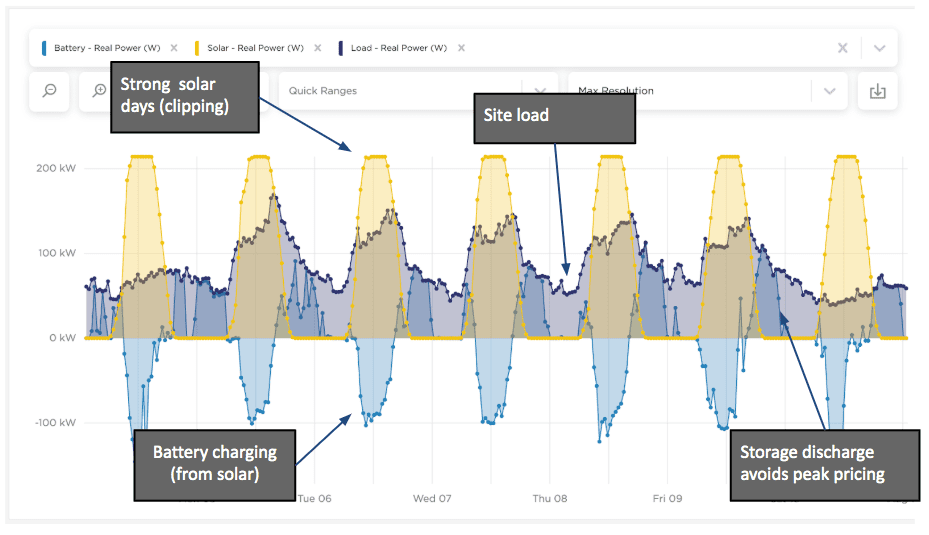
Solar Microgrid economics
After a year of the microgrid’s operation, Direct Relief’s electricity costs totaled $153,213, or a blended $0.1786/kWh. Without the microgrid, their cost would have been about $148,375, or a blended $0.173/kWh. This premium of approximately 3%/kWh, or about $0.0056/kWh, represents what Direct Relief is currently paying for its indefinite renewables-driven resilience.
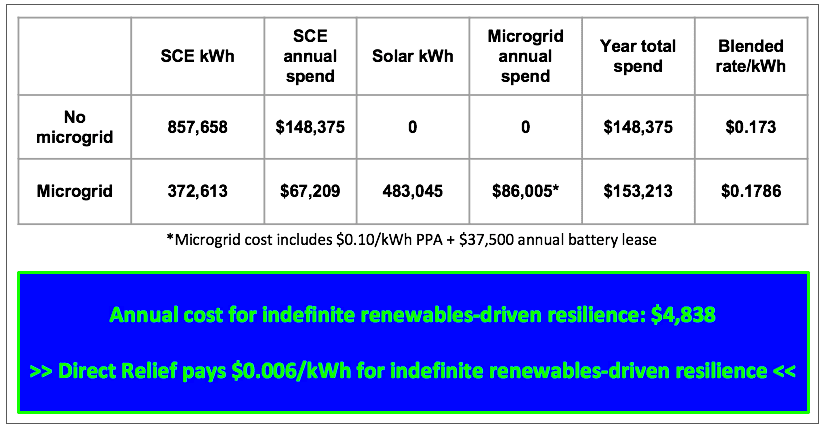
Expanding the Direct Relief Solar Microgrid
Direct Relief’s Solar Microgrid offset only about 57% of total energy consumption because of the facility’s higher-than-expected energy use. Given this higher energy use, and the additional load associated with EV chargers installed after the Solar Microgrid, doubling the size of the microgrid could be justified.
Direct Relief would also like for their facility to be a cornerstone of the Goleta Load Pocket Community Microgrid (GLPCM) that the Clean Coalition is staging, helping to provide indefinite renewables-driven resilience for the entire GLP. But the limits to Direct Relief’s potential microgrid expansion result in a stranded sitting opportunity that, if fully developed, could supply at least four times more renewable energy generation for the GLPCM – providing the community unparalleled economic, environmental, and resilience benefits.
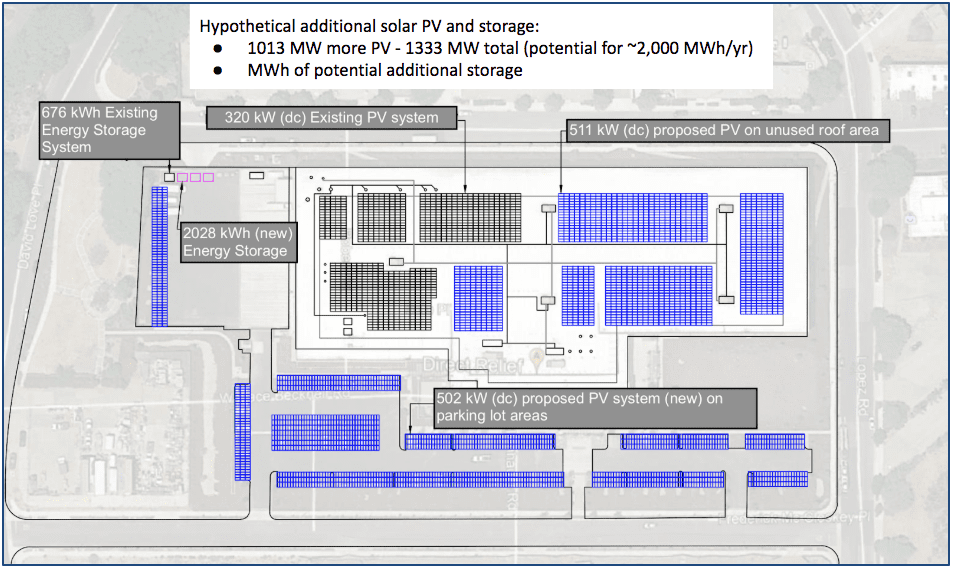
How Planet Ark Power’s eleXsys™ can help expand the microgrid
Utilities have long argued that part of the reason they limit the size of behind-the-meter (BTM) NEM systems is that non-dispatchable DER can destabilize the grid. But commercially available solutions nullify this argument.
One such solution, Planet Ark Power’s eleXsysTM, was developed in Australia, where the grid has reached its “solar hosting capacity” because of high solar adoption rates. eleXsys™ is an advanced power electronics device with a suite of artificial intelligence (AI) applications enabling next-generation two-way smart grids. This technology platform manages the stability and resilience of distributed solar and wind generation, unlocking the full potential of electricity networks to integrate distributed solar and wind energy.
Paired with energy storage and the appropriate controls, eleXsys™ allows Solar Microgrids like Direct Relief’s to be built as large as possible without adversely impacting the grid. Any power that isn’t used by the facility can be incorporated into the energy generation mix distributed across the grid, benefitting the entire community.
The time to act is now
With increasing severe weather events and power outages, our communities need renewables-driven resilience today. We need better policies and market mechanisms to proliferate Community Microgrids. But while we work to implement those, we can turn to technological solutions available now to expand microgrids like Direct Relief’s.
+ Read the full Direct Relief case study

